IN the spirit of biodiversity I give you Meinklang. Ring a bell? Almost certainly not. No supermarket shelves stock wines from this eco-conscious producer whose vineyards straddle Austria and Hungary. We are talking cult following. They deserve more. Search them out at the organic online specialist Vintage Roots here, at the Northern Quarter’s Bakerie Tasting Store or on the restaurant wine list at Aumbry, Prestwich.
Star of the show – apart from George Bergier himself – at the veteran Chop House sommelier’s celebration of his 45 years in the Manchester hospitality trade was Wynn’s Coonawarra Estate Riesling 2005.
Biodynamics is often referred to as 'super-charged organic'. Its roots are in the theories of the Austrian philosopher, Rudolf Steiner. Rather than simply reducing chemical inputs, biodynamic production is a proactive attempt to bring life to the soil with the use of natural composts and organic preparations.
It’s more than just an agricultural system, rather an altered world view that then impacts on the practice of agriculture. Winemakers drawn to this philosophy tend to be creative, spiritual types, deeply connected to their land and always experimenting to see what works best.
Take Meinklang. To make one of their reds, from biodynamically grown Sankt Laurent grapes – related to pinot noir – they use 'Konkret', a new method of vinification in 9-hectoliter concrete egg-shaped vessels (main image above). Extremely fine pores allow a controlled supply of oxygen to the wine while it is 'incubated' in the egg for up to 12 months.
Aumbry stock the 2009 Sankt Laurent 'Konkret' at £57 and also from Austria’s Burgenland region and the same vintage, Meinklang Pinot Noir at £20 cheaper; the first is a dense blackberry rich bruiser with hints of bitter chocolate and coffee, the second offering lighter but equally pure fruit.
Here are three further Meinklang wines that are equally impressive. Prices are from the Bakerie Tasting Store, which stocks a full range.
Meinklang Harselevelu 2010 (£17.99): Tongue-twisting name, tongue-pleasing minerally fruit, a kind of mini-Marsanne from an indigenous Hungarian grape variety.
Meinklang Gruner Veltliner 2012 (£11.99): More fresh, minerally fruit with a distinctive white pepper kick on the palate. A lovely white food wine.
Meinklang Zweigelt Graupert 2011 (£16.99): Smells of violets and spice, then packs in pure, bitter cherryish fruit.
The
Bakerie Tasting Store, as its name suggests runs regular in-store tastings. Star attraction looks to be
The Wines of Jean Bousquet on Tuesday, March 26. Malbecs and more from this Frenchman making exceptional organic wines in Argentina. £10 in advance.
Click here.
Gatley-based wine importer Paul Boutinot has put his money where his palate is by investing in a South African winery called Waterkloof, devoted to biodynamic principles. It’s not through any philosophical fanaticism, just because these methods in that particular spot (Stellenbosch’s Helderberg Winelands) seem suited to creating the individual, minimum intervention wines he seeks.
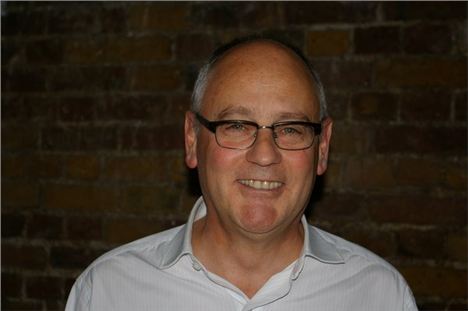 Paul Boutinot
Paul Boutinot
It has won Waterkloof Biodiversity Champion status. To find out what lengths they went to
visit here.
Waterkloof’s top wines are stunning – the Circle Of Life white and red, each available at £17.50 from Reserve Wines of West Didsbury (click here), while Hanging Ditch (click here) stocks the white and D. Byrne & Co of Clitheroe the red.
The Circle of Life White 2011 is a blend of Chenin Blanc, Sauvignon and Semillon, buttery and smoky with lots of luscious melon and peach on the palate, cut through with fine acidity.
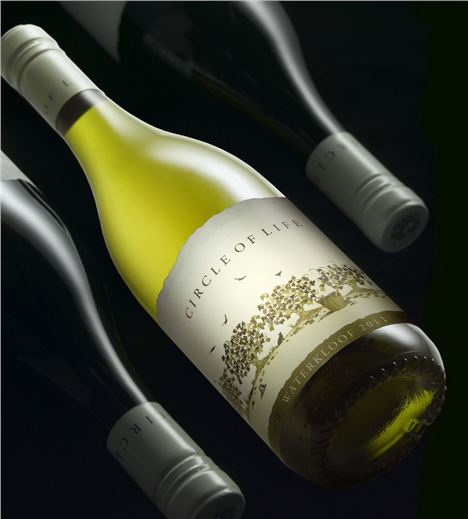 Just like the Lion King
Just like the Lion King
The Circle of Life Red, from the 2009 vintage, is a blend of Merlot and Syrah, plus subsidiary Cabernet Sauvignon, Mourvèdre, Petit Verdot and Cinsault. A sweet cassis nose is followed by ripe but savoury black fruit on the palate. Attractive now but likely to gain complexity with a few years’ bottle age.
At under half the price, Waterkloof’s workhouse wines are terrific value, notably the widely available Peacock Ridge Sauvignon Blanc – passion fruit flavours and tight minerality with fresh acidity.
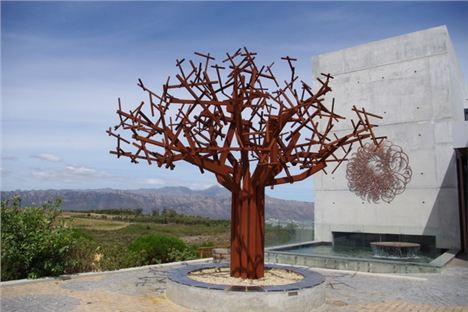 A tree sculpture at Waterkloof
A tree sculpture at Waterkloof
Boutinot also make wine in the Rhone Valley around the village of Cairanne. Their first red wine of the outstanding 2010 vintage is 'Les Coteaux' Cȏtes du Rhône Villages 2010– available from D. Byrne of Clitheroe (click here).
Made from a selection of the best wines from named villages in the southern Rhône and mostly unoaked, ‘Les Coteaux’ 2010 is unique in two aspects. Firstly each component has been matured for over two years before assembling and bottling in late January 2013. Secondly each vintage is enriched with barrels of ‘classified’ named village wine from Cairanne, Sablet and Séguret to add depth and complexity.
Working to a much later release date than many other producers, winemaker Eric Monnin follows a philosophy of allowing nature to take its course as much as possible – both in the vineyard and the cellar. He refers to this as “letting the wine decide”.
Boutinot (
click here), of course, are much more than the sum of their own wines. Among new inclusions on their list is a new (to me) sparkling winemaker,
Henners, whose East Sussex vineyards at Herstmonceux were only planted in 2007.
The first wine, Henners Vintage 2009 (RRP £27) deservedly won silver at the recent Decanter Awards. From a classic Champagne blend of equal Chardonnay, Pinot Noir and Pinot Meunier, it offers biscuity brioche on the nose, with delicate apple on the palate. A vintage Reserve and Rose follow in April 2013.
There was a time when the ubiquitous, aromatic Viognier grape existed only in a tiny Northern Rhone enclave – cultivated by a few diehard producers in Condrieu and in the legendary rich mica soils of Chateau Grillet. Nowadays from the Languedoc to Chile, Viognier is planted in huge swathes with very mixed, blowsy results, particularly in blends.
So I was fascinated to reencounter the 'Ur-Viognier', Neyret Gachet Chateau Grillet, at a recent trade tasting. That was courtesy of original importers, Yapp Brothers operating out of Mere, Wilts since 1969. The current vintage, 2008, retails at £85. Worth it? Definitely. But don’t rush it; decant it at cellar temperature to allow its complex, floral, nutty, mineral charms to unfold or lay it down for a decade to see its complexity develop further.
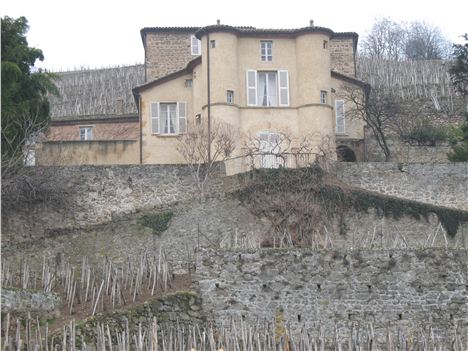 Chilly day in France
Chilly day in France
Yapps built their reputation on Rhone and Loire wines. These days they cast their net wider. One curiosity is
Arnaud Aucoeur Beaujolais Villages Vieilles Vignes Blanc 2011 (£10.95). An old vine, straw-coloured white made from pure chardonnay grown on limestone slopes, it balances citrus and pineapple flavours with refreshing acidity. Most production from this 11th-generation Beaujolais grower is, of course, red.
Adnams is another veteran wine merchant, with an innovative online list. Italy’s north eastern Trentino region provides it with two contrasting wines from the Teroldego red grape – from Endrizzi, producers based at the foot of the Dolomites, who also have vineyards in Tuscany.
Endrizzi Teroldefgo Rotaliano 2011 (£10.99) is the product of enthusiastically biodynamic vineyards, a dark structured, deeply fruity warm red, but it is Endrizzi Gran Masetto 2008 (£36.99), which shows what this grape is capable of. Gran Masetto is made with techniques similar to those used in the production of Amarone, so the Teroldego grapes from the best sites are partially dried on mats, fermentation of the rich musts lasts for up to 30 days and the wine is aged in French barriques for 20-24 months. Very limited edition, it won Silver at the Decanter 2012 Wine Awards for its lovely red cherry, herby vanilla notes. Gorgeous stuff.
![Chianti_Orange_Label_High_Res[1] Chianti_Orange_Label_High_Res[1]](https://assets.confidentials.com/uploads/imported/i/L7I/5XUN_F.jpg) Chianti Orange LabelAt the other end of the spectrum, for an everyday Italian red, look no further than the Piccini ‘Orange Label’ Chianti 2011 (Morrisons and Sainsbury’s, £7.99). Made from mainly Sangiovese with five per cent Ciliegiolo it is warm and smooth with soft tannins.
Chianti Orange LabelAt the other end of the spectrum, for an everyday Italian red, look no further than the Piccini ‘Orange Label’ Chianti 2011 (Morrisons and Sainsbury’s, £7.99). Made from mainly Sangiovese with five per cent Ciliegiolo it is warm and smooth with soft tannins.
Star of the show – apart from George Bergier himself – at the veteran Chop House sommelier’s celebration of his 45 years in the Manchester hospitality trade was Wynn’s Coonawarra Estate Riesling 2005. At the special lunch in The Albert Square Chop House it accompanied a langoustine, crab and oyster starter, but you could easily pick it off the list just to sip there or at Thomas’s and Sam’s. For £28.95, you get a lovely Rieslingy orange blossom-with-kerosene nose and a palate of grapefruit, lime and an attractive chalkiness.
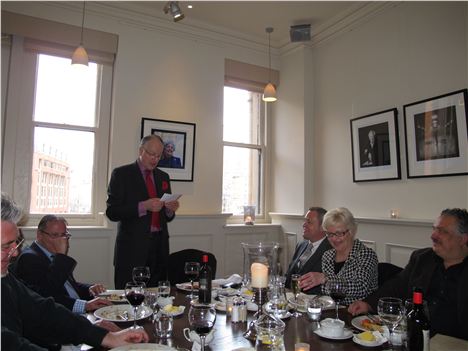 George Bergier reads the funniest joke in the world at Albert Chop House
George Bergier reads the funniest joke in the world at Albert Chop House
Staying with Down Under, I highly recommend a white and a red from city centre merchants Hanging Ditch – Mountford Estate Chardonnay 2009 (£40) and Paringa Peninsula Shiraz Viognier 2007 (£30).
The first is from Waipara in New Zealand and bears a strong resemblance to oak-aged Chablis, its concentrated fruit nutty and minerally; the second, from Victoria’s cool-climate Mornington Peninsula, softens out the meaty, peppery Shiraz fruit with dash of apricotty Viognier, Cote Rotie style.
Both were sourced from indie Down Under specialists Hallowed Ground. Their next arrival at the Ditch is likely to be Ulithorne Frux Frugis Shiraz 2008 (RRP £31) from South Australia’s McClaren Vale. Hugely impressive at a recent tasting, it’s a big Oz Shiraz that displays an unusual elegance with oodles of vanilla, chocolate and juicy fruit. Much of the harvest is sold to go into Penfold’s Grange. Enough said.
Finally, to celebrate Fairtrade Fortnight try Fairhills Cabernet Petit Verdot (down from £7.99 to £6.49 at Tesco until March 10 2013), a big but elegant South African red full of jammy and black pepper flavours.
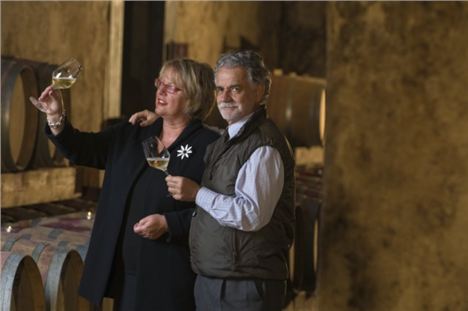 Inside the Endrizzi cellars in Trentino
Inside the Endrizzi cellars in Trentino
![Chianti_Orange_Label_High_Res[1] Chianti_Orange_Label_High_Res[1]](https://assets.confidentials.com/uploads/imported/i/L7I/5XUN_F.jpg) Chianti Orange LabelAt the other end of the spectrum, for an everyday Italian red, look no further than the Piccini ‘Orange Label’ Chianti 2011 (Morrisons and Sainsbury’s, £7.99). Made from mainly Sangiovese with five per cent Ciliegiolo it is warm and smooth with soft tannins.
Chianti Orange LabelAt the other end of the spectrum, for an everyday Italian red, look no further than the Piccini ‘Orange Label’ Chianti 2011 (Morrisons and Sainsbury’s, £7.99). Made from mainly Sangiovese with five per cent Ciliegiolo it is warm and smooth with soft tannins.



















